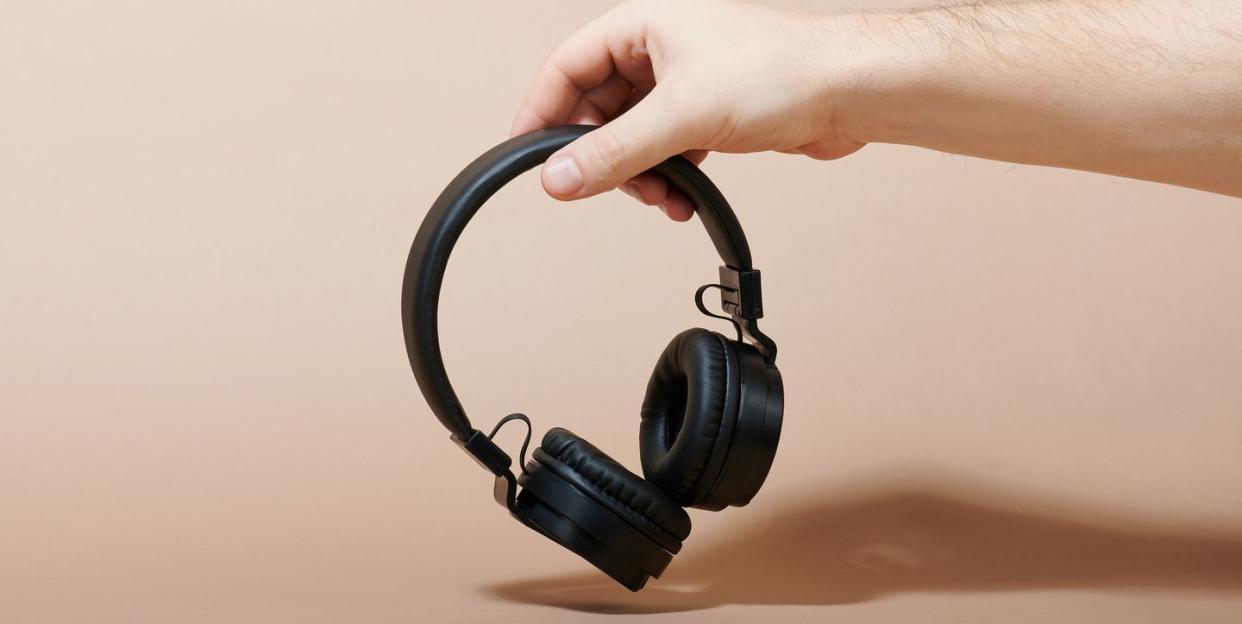Curious About How Noise-Canceling Headphones Work? These Experts Explain What to Know

"Hearst Magazines and Yahoo may earn commission or revenue on some items through these links."
It's becoming the new standard that many mid-range to high-end headphones and earbuds now include some form of noise-canceling technology.
Having the ability to block out the sounds of your surroundings so you can focus on work, listen to music, or tune out environmental distractions are just a few of the reasons why consumers are fans of the tech. However, many people may buy a pair of noise-canceling headphones without really understanding the ins and outs of the technology.
If "How does noise canceling work?" has ever crossed your mind, we have you covered. We spoke with a couple of experts at leading audio brands to better understand the basics — here's what you need to know if you're about to invest in a pair of noise-canceling headphones or earbuds.
How does noise-canceling technology work?
The first thing to know is that headphones have two main types of noise-canceling technology: active and passive.
“Active noise-canceling (ANC) headphones use built-in microphones to detect ambient sounds,” says Maria Gabriela Maduro, global product manager at Bang & Olufsen. “These microphones capture the external noise and then produce an inverse sound wave, also known as an anti-noise wave, to cancel out the unwanted sounds.”
ANC is generally best used to combat continuous, low-frequency sounds like background chatter at a coffee shop or the hum of an airplane engine while in flight. The mic inside ANC headphones is also a critical part of helping distinguish the sounds around you.
“A processor inside will pick up that noise and produce a sound wave to counter and eliminate the ambient noise,” says Tetsuya Hayashi, department general manager at musical instrument maker Roland Corporation. The idea is that the processor will help decide how to remove the noise around you most effectively.
On the other hand, passive noise-canceling headphones rely on design and materials to block out noise.
“Instead of ANC, [passive noise-canceling tech] uses features like noise-isolating ear cups or ear tips to create a physical barrier that prevents sound from reaching your ears,” Maduro says. This hardware can effectively reduce high-frequency noise and is often combined with ANC in some headphones.
What are the risks and benefits of noise canceling technology?
The main benefit of noise-canceling technology is that it makes the audio content from your headphones sound crisp and clear, so you don’t have to turn up the volume to hear it. This tech, specifically ANC, is even starting to be integrated into sound technology beyond headphones — like in the speaker systems of certain car models — so it’s becoming more common as a means to improve the audio we play.
In fact, a 2022 Healthcare study found that there’s real potential in using ANC for ongoing hearing protection in loud environments. The lower sound pressure found with noise-canceling headphones may actually lead to longer-term hearing preservation, although this research is still very new.
However, the risks of noise-canceling headphones come from multihour wear, especially at a high altitude (on a plane, for example) — ANC tech can cause uncomfortable ear pressure issues for the wearer over time. ANC-equipped headphones also tend to be bulkier and can put irritating pressure on the outer ears and temples, especially if worn over eyeglasses or sunglasses.
Then, there are the safety concerns of being unable to hear what’s happening around you. For this reason, several states have banned headphone use while driving or have stipulated that only one earbud can be worn while driving. While blocking out all sound may be useful in a noisy indoor environment like the gym, it can become dangerous if you're wearing them in or around traffic.
“I feel that the latest ANC headphones on the market are too strong and give a total isolation feel,” Hayashi says. “I find that the ‘latest ANC’ tech-equipped headphones don’t always mean they’re the best.”
Does the technology differ in headphones compared to earbuds?
The main difference in the noise-canceling technology of headphones and earbuds is size. Headphones are bigger, so manufacturers can put more ANC and PNC tech into the cans that go over your ears. Although, ANC tech has gotten so good that many brands can now stuff some serious noise-blocking tech into earbuds, too.
As aforementioned, there's a tendency for earbuds with ANC tech to create too much pressure inside the ears, which can cause discomfort after a while. Before you buy a pair, take note of the brand's return policy, just in case the noise-canceling technology of that particular model feels too intense for you.
Is active noise canceling the same technology that AirPods use?
The short answer is, yes. The Apple AirPods use ANC to block out noise, and users can toggle between three different settings: “on,” “Transparency Mode,” (which lets some outside noise in) and “off” (letting all noise in). The AirPods wearer can control these settings from most devices beyond the headphones themselves.
Is there a recommended limit for noise-canceling technology use?
Although there isn’t a recommended limit for noise-canceling technology use specifically, according to the National Institute on Deafness and Other Communication Disorders, it's been shown that long or repeated exposure to sounds at or above 85 decibels can result in hearing loss.
Knowing this, when wearing headphones or earbuds (whether they're equipped with ANC/PNC tech or not), it's a good idea to listen with them at the lowest possible volume and to give your ears periodic breaks from wearing them.
You Might Also Like

